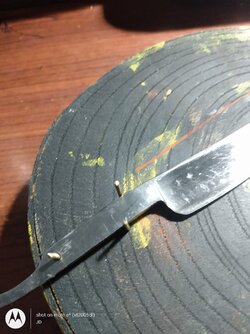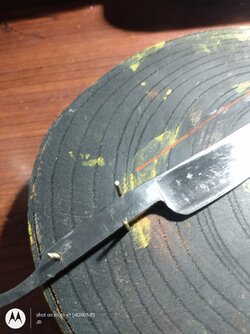when people start something new, they do things people recommend, but they make it their own. what are your best tips that you have found as you learn to restore and hone razors? I took a board put a pin in it to hold the blade. I put pin so the Tang would hang over the edge of the board. I then put a pin on each side of the shank to hold the blade in place as I sanded. I did this because of my multiple sclerosis and I do it in bed.
I think a thread on tips would be good. no matter what you're doing polishing, making scales. I do most things by hand with no power even using a pen vise to make the holes. I cut my scales with a jeweler saw. I need all the tips I can get. and even though there are so many great people on here, there are some that rather than answer they comment in an effort to start controversy. you know who you are. find somewhere else to go you're not wanted here.
I think a thread on tips would be good. no matter what you're doing polishing, making scales. I do most things by hand with no power even using a pen vise to make the holes. I cut my scales with a jeweler saw. I need all the tips I can get. and even though there are so many great people on here, there are some that rather than answer they comment in an effort to start controversy. you know who you are. find somewhere else to go you're not wanted here.






